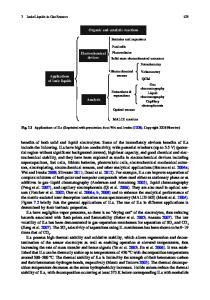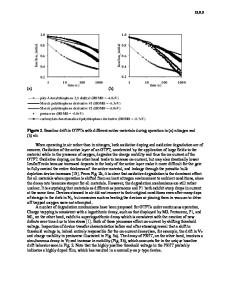Zinc Oxide Gas Sensors
- PDF / 973,311 Bytes
- 11 Pages / 612 x 792 pts (letter) Page_size
- 24 Downloads / 426 Views
Oxide Gas Sensors V. M. Aroutiounian* Yerevan State University, Yerevan, Armenia *e-mail: [email protected] Received May 12, 2020; revised May 30, 2020; accepted June 12, 2020
Abstract—The review discusses the results of studies of gas sensors based on zinc oxide. Possibilities and technologies for the manufacture of such sensors are mentioned. ZnO sensors undoped, doped with impurities and carbon nanotubes, as well as sensors based on nanowires and quantum dots are considered. Possibilities of decreasing the operating (working) temperature of heating the working body of the sensors while maintaining a sufficiently high sensitivity to gases are shown. Recently developed ZnO sensors operate today at room temperature (without preheating their working body) in the absence of and under UV light from the sensor. Keywords: zinc oxide, gas sensor, sensitivity, operating temperature, room temperature, ultraviolet illumination DOI: 10.3103/S1068337220040040
1. INTRODUCTION A lot of publications and patents about semiconductor gas sensors are published today in several scientific journals, materials of many Meetings, etc. Confine ourselves only of citations of four books published in the field [1–4]. The information about commercially available sensors based on metal oxides and produced in the USA, and Japan can be found in www.figarosensor.com, www.honeywell.com, www.sinkera.com, etc. All mentioned gas sensors need in high pre-heating of work semiconductor body, i.e. rather high consumption of electric energy. The lack of selectivity and long-term stability also often limit their applications. The range of the operating temperature (OT) of commercial gas sensors spans several hundred grads °C. The problem today is the development of new semiconductor gas sensors working at or nearby room temperature of work body (practically without its pre-heating) and the use of small-size metal oxides sensors functionalized (decorated) with different impurities or nanotubes, covered by noble metal coatings. Nanoscale sensor applications secured the increase of the specific surface area and further advantages. In addition, today’s sensors should be cheap and have possibilities to its inclusion into microelectronic circuits. Today the gas sensitivity of thin-film structures made of different metal oxide materials (SnO2, ZnO, TiO2, WO3, In2O3, CuO, NiO, Fe2O3, Co3O4, V2O5, ZnSnO3, etc.) are studied widely [1–7]. Among the metal oxides, ZnO is proven as one of the best candidates for gas sensing applications due to its excellent material of tunable sensing parameters such as sensitivity, selectivity and stability, and good reliability, in addition to its non-toxic nature, controlled morphology, transparency in the visible range, a rather high electron mobility, cost-effectiveness and biocompatibility. Zinc oxide (ZnO) has a wide bandgap of 3.37 eV. It has aroused wide attention from scientists [8–16], and has potential applications as UV photodetectors [10], light-emitting diodes [13], solar cells [14], varistors, phosphor for color displays,
Data Loading...










